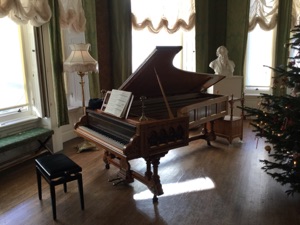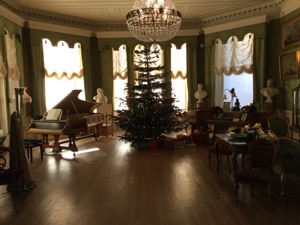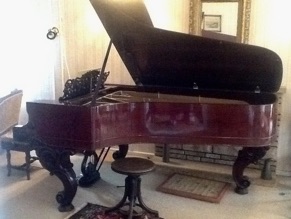19th Century Pianos

Here are the strings. You will notice it is ‘straight strung,’ where the bass doesn’t cross over the mid range, has no cast iron frame, and has a narrower shape. You may just be able to see the under dampers, not sitting on the top of the strings like modern grands, but pushed up from below.
I’ve already commented that a romantic HIP style is perfectly possible on a modern piano. But this doesn’t mean there is no reason to play a 19th century instrument. They were built differently, to be played in different environments (often ballrooms, drawing rooms, or wooden-floored terraced houses), and so they sound different from our modern pianos. So having this sound in mind - the sound the great romantic composers had in mind - is extremely helpful for us. Some of my audiences have actually preferred the older sound!

So here are my three historic instruments. First, an 1842 Broadwood square piano. Square pianos (so called even though they are oblong!) were the domestic instrument of the later 18th century and early to mid 19th century. Apart from reduced cost and space over a grand, they were used as tables (with the lid fully closed), so quite practical. Its sound is quite bright, but not dynamically huge, perfect for intimate spaces and repertoire. Ultimately, the familiar upright piano design superseded them, taking even less space, and with a much bigger soundboard going up the wall.
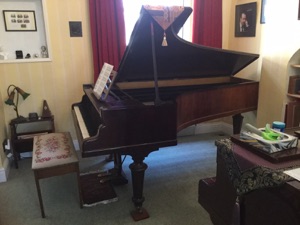
Next is an 1864 Érard grand (from the London factory). Since Érard left their design basically unchanged from before the early 1850s, it’s the type of piano Chopin and Liszt played. Compared with a modern instrument, it has a clearer sound, more woody, more varied between registers, more intimate and conversational.
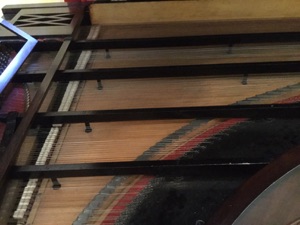
Finally, here is my 1876 American Steinway. It’s almost completely modern, just with a slightly narrower frame and soundboard, giving a clearer sound in the bass and quicker decay in the treble. Better balanced, I think, than later designs.
So where were these instruments designed to be mostly played? Not in huge modern concerthalls, but in large, elegant drawing rooms and ball rooms. Here is the Érard grand I used to record Liszt’s Consolations and Années de Pèlerinage première année. It is part of the general collection at Lotherton Hall, West Yorkshire, perfectly placed in the large drawing room. My thanks, as always, to the staff.
